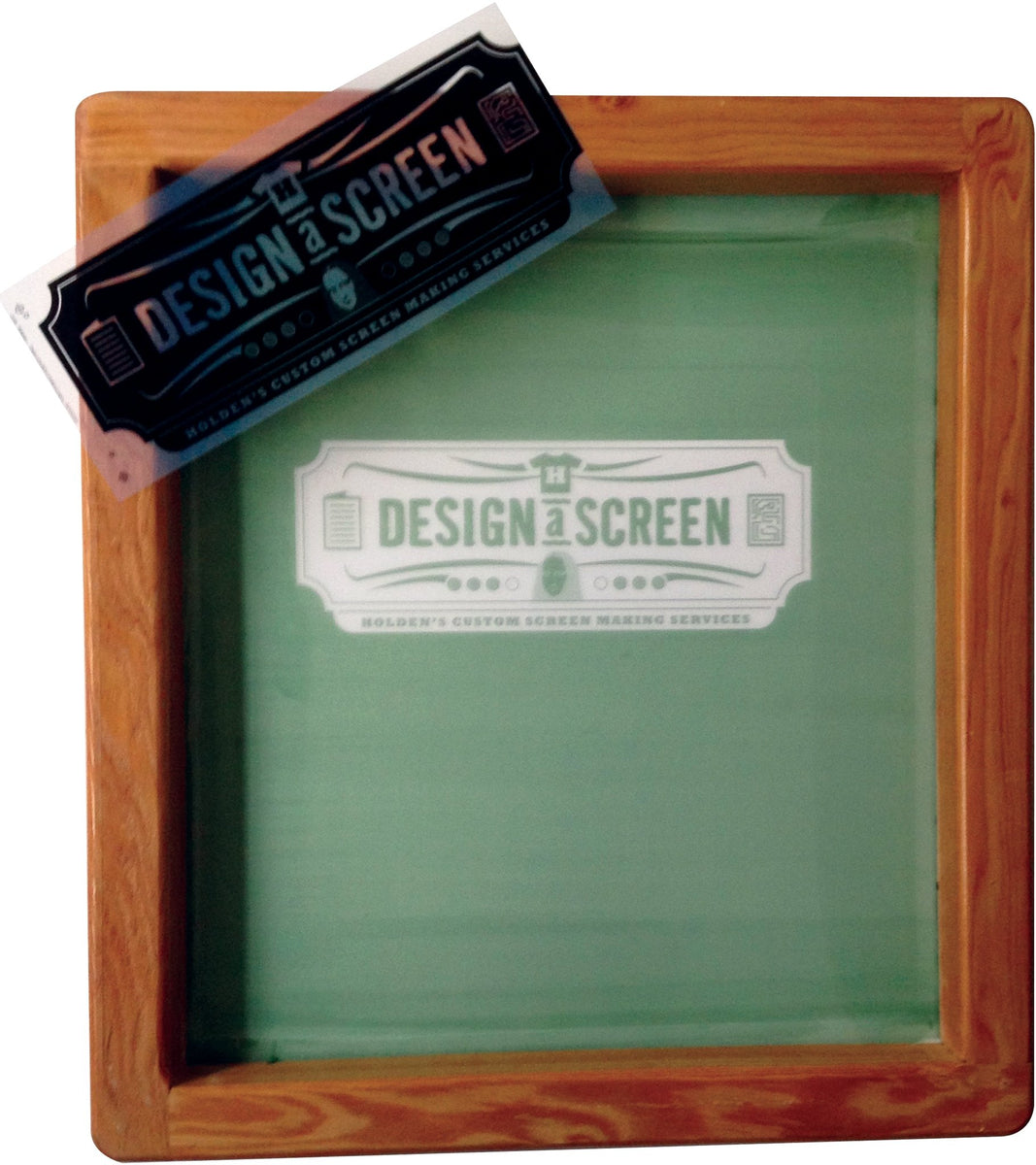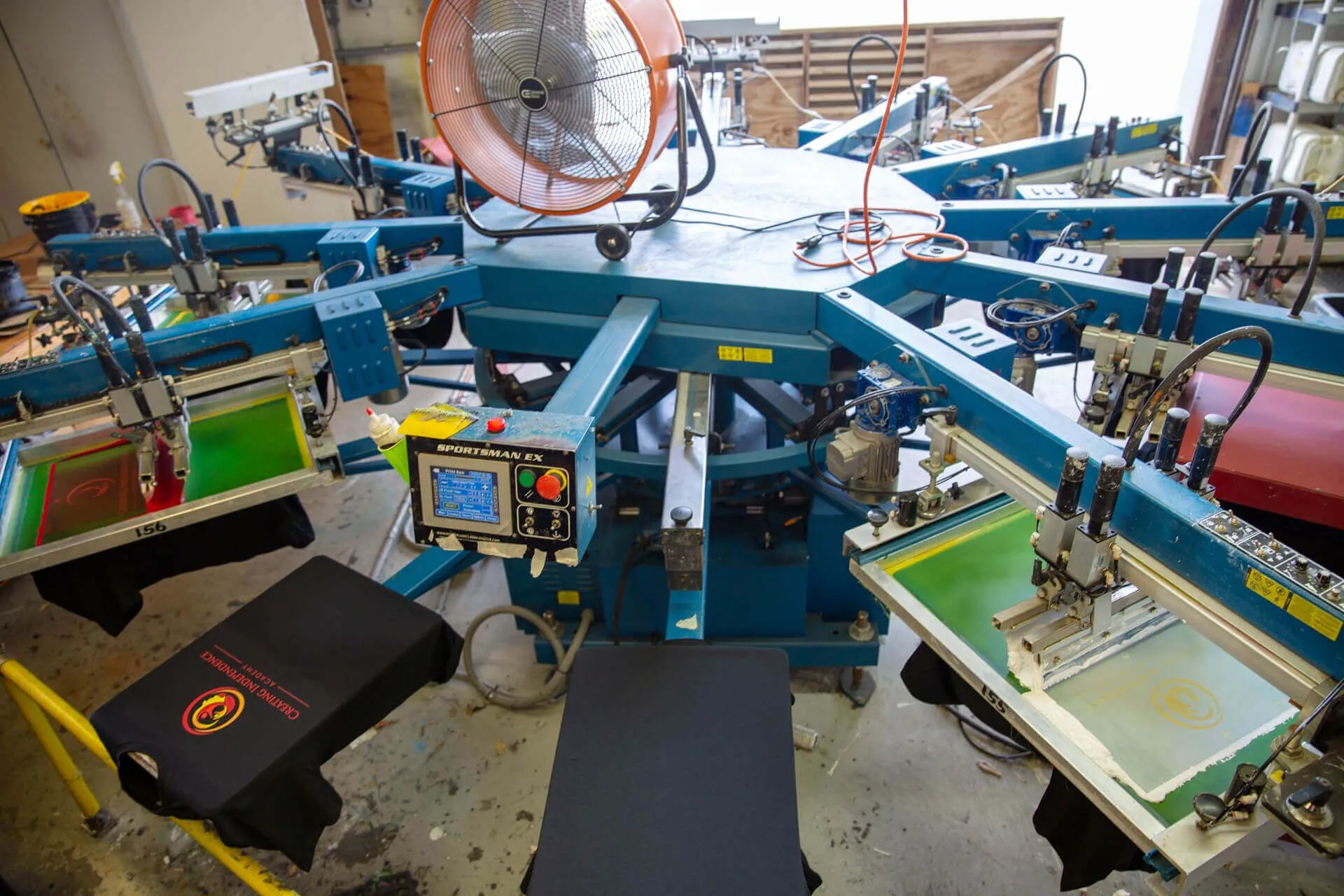Silk Screen Printing for Bold and Lasting Designs
Screen Printing Uncovered: Every Little Thing You Need to Learn About T-Shirt and Garment Printing Strategies
Screen printing is a remarkable method that combines art with technique, using countless opportunities for imagination. Ready to discover the crucial components that make screen printing an art type?
The Essentials of Display Printing: Just How It Works
When you plunge right into display printing, you'll discover it's both an art and a science. At its core, display printing involves producing a stencil, or screen, that enables ink to travel through just in specific areas (screen printing kit). You begin by picking your design and preparing your display with a light-sensitive solution. As soon as you expose this emulsion to light, it solidifies, leaving your style as a negative space.
Next, you'll mix your inks and prepare your printing surface area. Position the screen over the textile, after that make use of a squeegee to push ink through the display onto the garment. This procedure requires precision, as you desire clear, vivid prints. After printing, you'll treat the ink with warm, ensuring it abides by the fabric and lasts via laundries. Each action is necessary, and mastering them will raise your screen printing skills, transforming straightforward garments into distinct, meaningful items.
Sorts Of Screen Printing Methods
As soon as you understand the fundamentals of display printing, it's time to check out the numerous methods that can boost your styles. One prominent technique is conventional display printing, where ink is pressed through a stenciled display. This strategy is fantastic for vibrant, lively shades. There's water-based ink printing, which uses a softer feeling and is environment-friendly, but it needs a different method to healing.
Another choice is plastisol printing, known for its longevity and vibrant shades, making it a preferred for many brand names. Experiment with halftone printing to produce slope results and complex styles.
Essential Equipment for Screen Printing
To achieve stunning lead to display printing, having the appropriate equipment is fundamental. You'll need a tough display printing frame, which holds the mesh that transfers your design onto the garment. Next off, buy high-grade mops; these are important for using ink uniformly throughout the display. You'll also require an excellent exposure system to develop your displays, along with a washout booth for cleansing them after usage. A reputable warmth source, like a conveyor clothes dryer or warm press, is vital for healing your prints to ensure durability. Don't neglect an appropriate work space, equipped with tables and storage space for your products. Safety gear, such as masks and gloves, will certainly keep you risk-free from chemicals and inks. With the right devices, you'll be well on your method to creating professional-quality prints.
Choosing the Right Inks and Products
When selecting inks and products for display printing, you need to take into account the sort of ink that functions finest for your job. Consider fabric compatibility to assure your styles look great and last lengthy. Additionally, explore eco-friendly ink alternatives to make your printing procedure much more lasting.
Kinds of Display Inks
Choosing the appropriate display ink is vital for attaining lively, long lasting prints that satisfy your project's requirements. There are numerous kinds of display inks to check out. Plastisol ink is preferred for its flexibility and ease of use, giving outstanding color opacity on dark fabrics. Water-based ink, on the other hand, offers a softer feeling and is eco-friendly, making it ideal for those seeking to lessen their environmental effect. Release inks get rid of dye from the material, leading to a soft, classic look however require certain handling. Finally, specialized inks, such as metal or glow-in-the-dark, can add unique results to your styles. Review your job demands and choose the ink that straightens finest with your wanted result.

Textile Compatibility Considerations
Recognizing textile compatibility is important for attaining high-grade screen prints, specifically because various products react distinctively to various inks. When picking inks, think about the textile kind-- cotton, polyester, or blends. For cotton, water-based inks function well, supplying softness and breathability. Polyester, on the other hand, often requires plastisol inks for much better adhesion and vibrant colors. You might need to use a mix of both kinds if you're printing on blends. Always check your inks on sample material to assure they stick properly and preserve shade stability. In addition, bear in mind that fabric weight and appearance can impact the last outcome, so selecting the right ink and product combination is vital for your project's success.
Eco-Friendly Ink Options
Eco-friendly inks are ending up being a popular choice for display printers who desire to reduce their environmental impact while preserving high quality. When choosing inks, consider water-based inks, which are less damaging and much easier to cleanse up compared to traditional solvents.
Additionally, seek inks made from eco-friendly sources, such as soy or vegetable-based choices. By picking the appropriate inks and materials, you'll not just create sensational styles yet additionally add to an extra sustainable printing procedure. Make the switch, and your prints will certainly reflect your dedication to the environment!
Preparing Your Design for Display Printing

File Layout Demands
To ensure your layout looks vibrant and sharp on material, you'll require to pay close interest to submit format demands for display printing. Beginning with vector files like AI or EPS, as they can be scaled without shedding top quality. If you make use of raster pictures, choose high-resolution data, such as TIFF or PNG, ideally at 300 DPI. Stay clear of using JPEGs, as they can shed quality when resized. Make sure your layout has a clear history to protect against unwanted white edges on your prints. Lastly, keep color settings in mind; CMYK is standard for screen printing, so convert your RGB creates appropriately. By adhering to these guidelines, you'll establish your art work up for an effective print.
Color Separation Methods
Color separation is a crucial action in preparing your layout for display printing, and mastering it can considerably enhance your print quality. You'll require to break your style into private colors, as each shade needs a separate display throughout printing. Start by recognizing all the colors in your style and develop layers for each one. You can make use of software like Adobe Photoshop or Illustrator to isolate and separate shades successfully. Be particular to conserve each layer as a separate data, normally in a layout like TIFF or PSD. This precision not just ensures accurate color representation however likewise improves the printing procedure. By focusing on color separation, you'll attain specialist and lively outcomes in your screen-printed garments.
Resolution and Dimension
Accomplishing the very best cause display printing begins with ensuring your style has the best resolution and dimension. Preferably, your art work needs to be at the very least 300 DPI (dots per inch) for sharp, clear prints. Your last item could look pixelated and less than professional. if you make use of reduced resolution.
When it concerns dimension, consider the dimensions of your print location. Layout your artwork to match the final print dimension, preferably producing it in the real measurements you'll be publishing. By doing this, you'll avoid any kind of unforeseen scaling concerns.
Always check your design in both next page vector and raster formats. Vector graphics can be scaled without losing top quality, making them optimal for screen printing. Preparing properly will guarantee your layout looks incredible on every garment!
Step-by-Step Display Printing Process
Display printing is a vibrant procedure that enables you to produce vibrant designs on various surface areas. To get begun, you'll require a display, emulsion, and your picked ink. Prepare your screen by cleansing it thoroughly. Next off, use the solution equally and let it completely dry in a dark area. Once completely dry, reveal your display to light with your layout put on it, which will harden the solution where the light hits, producing a stencil - screen printing kit.
Pour ink onto the screen and make use of a squeegee to push the ink via the pattern onto the material. Lift the display carefully and let the print completely dry. You have actually effectively display published your layout.
Tips for Effective Display Printing Projects
While you're diving into your display printing projects, bear in mind that preparation is key to success. Begin by collecting all your products-- inks, screens, squeegees, and garments. A tidy workspace assists protect against undesirable mistakes, so clean up before you begin.
Following, confirm your artwork is high-resolution and correctly sized for your garment. Examine your screen for correct direct exposure and clean it thoroughly to stay clear of spots. When mixing your inks, comply with the maker's standards to attain the ideal uniformity.
Throughout printing, use also stress with your squeegee for consistent results. Don't hurry; take your time to validate each print meets your criteria. After printing, let your garments dry totally prior to handling or packaging them.
Last but not least, always keep an example of your help future recommendation. By doing this, you can evaluate your development and enhance your methods over time. Delighted printing!

Frequently Asked Concerns
Just how Long Does It Require To Set up a Display Printing Work?
Setting up a display printing work generally takes around 30 mins to an hour. You'll prepare the displays, mix inks, and readjust the press. The moment differs based on intricacy and experience, so stay arranged!
Can I Publish on Different Fabric Enters Using the Exact Same Method?
Yes, you can publish on various material kinds making use of the same technique, yet you'll require to change your inks and setups. Some textiles take in ink in a different way, so trying out guarantees the very best outcomes for every product.
What Are Common Blunders to Prevent in Display Printing?
When display printing, stay clear of common mistakes like making use of the wrong ink, ignoring proper direct exposure times, or skipping pre-press checks. Constantly check your configuration and keep clean screens to ensure high quality results each time.
How Can I Correctly Tidy and Preserve My Display Printing Devices?
To effectively tidy and keep your display printing equipment, you ought to regularly clean screens with ideal solvents, inspect mops for wear, and ensure all devices are stored dust-free and dry. Uniformity improves and prevents pricey repair work efficiency.
Is Display Printing Eco Pleasant Compared to Other Methods?
Screen printing can be a lot other more eco-friendly than various other methods, especially if you use water-based inks and eco-conscious products. By picking sustainable materials and practices, you reduce waste and reduce your effect on the earth.
Display Printing Uncovered: Every Little Thing You Required to Know Concerning Tee and Garment Printing Techniques
At its core, display printing includes developing a stencil, or screen, that permits ink to pass through only in certain areas. Setting the screen over the material, after that use a squeegee to press ink with the display onto the garment. One popular method is standard display printing, where ink is pressed through a stenciled screen.When picking inks and products my sources for screen printing, you require to take into account the type of ink that works ideal for your task.